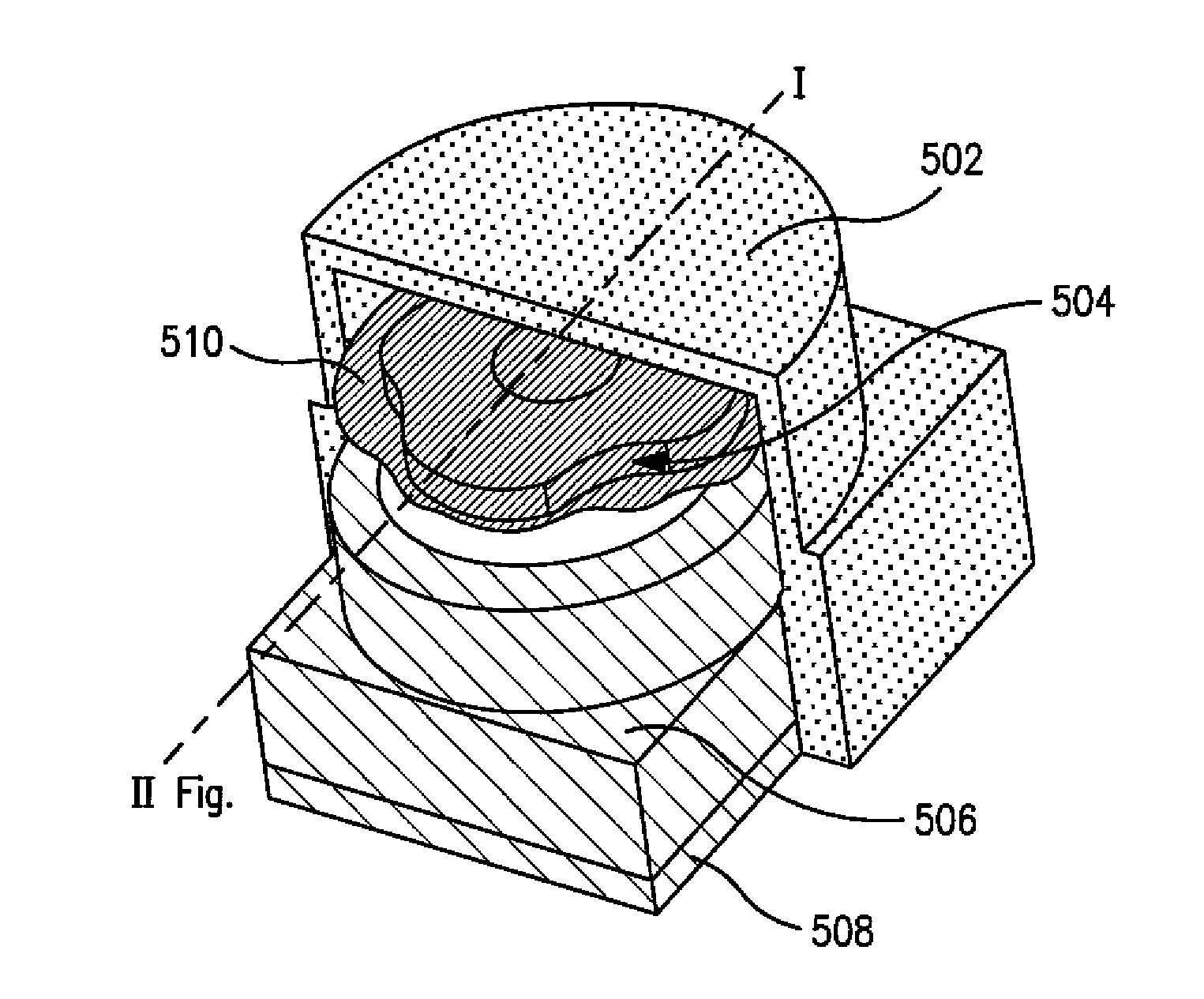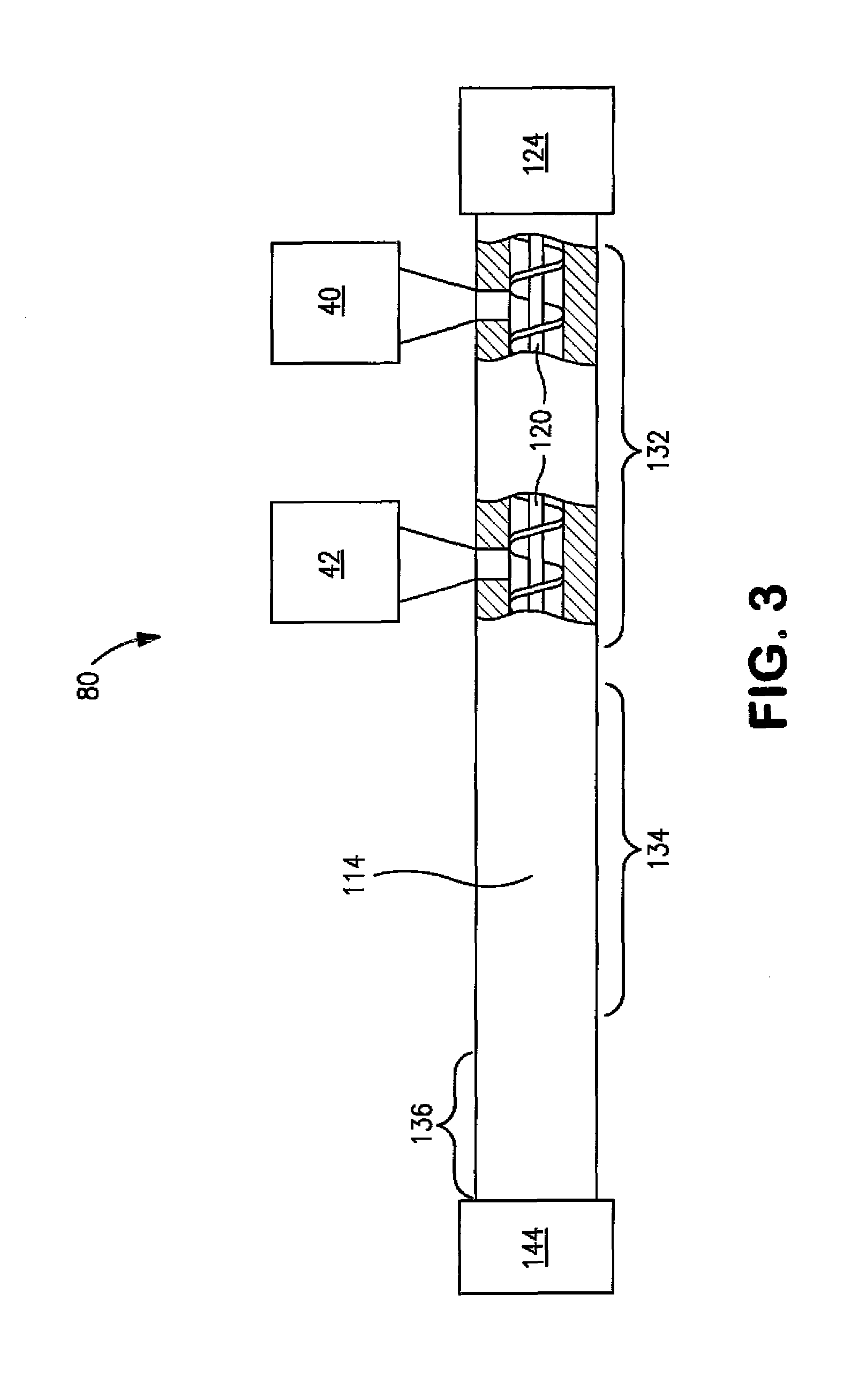Compact camera module
a camera module and compact technology, applied in the field of compact camera modules, can solve the problems of not being typically surface mounted, the plastic lens of conventional plastics cannot withstand solder reflow, and the problem of still encountered problems
- Summary
- Abstract
- Description
- Claims
- Application Information
AI Technical Summary
Benefits of technology
Problems solved by technology
Method used
Image
Examples
example 1
[0058]Three (3) samples of a thermoplastic composition are formed from 67.375 wt. % of a liquid crystalline polymer, 10 wt. % glass fibers, 22 wt. % talc, 0.3 wt. % Glycolube™ P, 0.2 wt. % alumina trihydrate, 0.1 wt. % 4,4′ biphenol, and 0.025 wt. % 2,6-napthalene dicarboxylic acid (“NDA”). The liquid crystalline polymer is formed from 4-hydroxybenzoic acid (“NBA”), 2,6-hydroxynaphthoic acid (“HNA”), terephthalic acid (“TA”), 4,4′-biphenol (“BP”), and acetaminophen (“APAP”), such as described in U.S. Pat. No. 5,508,374 to Lee, et al. The glass fibers are obtained from Owens Corning and had an initial length of 4 millimeters.
[0059]To form the thermoplastic composition, pellets of the liquid crystalline polymer are dried at 150° C. overnight. Thereafter, the polymer and Glycolube™ P are supplied to the feed throat of a ZSK-25 WLE co-rotating, fully intermeshing twin screw extruder in which the length of the screw is 750 millimeters, the diameter of the screw is 25 millimeters, and the...
example 2
[0065]Six (6) samples of a thermoplastic composition are formed from 49.375 wt. % of a liquid crystalline polymer, 30 wt. % glass fibers, 20 wt. % talc, 0.3 wt. % Glycolube™ P, 0.2 wt. % alumina trihydrate, 0.1 wt. % 4-biphenol, and 0.025 wt. % 2,6-napthalene dicarboxylic acid (“NDA”). The liquid crystalline polymer and glass fibers are the same as employed in Example 1. To form the thermoplastic composition, pellets of the liquid crystalline polymer are dried at 150° C. overnight. Thereafter, the polymer and Glycolube™ P are supplied to the feed throat of a ZSK-25 WLE co-rotating, fully intermeshing twin screw extruder in which the length of the screw is 750 millimeters, the diameter of the screw is 25 millimeters, and the L / D ratio is 30. The extruder has Temperature Zones 1-9, which may be set to the following temperatures: 330° C., 330° C., 310° C., 310° C., 310° C., 310° C., 320° C., 320° C., and 320° C., respectively. The screw design is selected so that melting begins at Zone...
example 3
[0071]Six (6) samples of a thermoplastic composition are formed from 49.375 wt. % of a liquid crystalline polymer, 0.3 wt. % Glycolube™ P, 0.2 wt. % alumina trihydrate, 0.1 wt. % 4,4′-biphenol, 0.025 wt. % 2,6-naphthalene dicarboxylic acid (“NDA”), and varying percentages of glass fibers and mineral filler (talc or mica). The liquid crystalline polymer of Samples 10-15 is the same as employed in Example 1. The liquid crystalline polymer of Samples 16-17 is formed from 4-hydroxybenzoic acid (“HBA”), NDA, terephthalic acid (“TA”), isophthalic acid (“IA”), hydroquinone (“HQ”), and acetaminophen (“APAP”).
[0072]To form the thermoplastic composition, pellets of the liquid crystalline polymer are dried at 150° C. overnight. Thereafter, the polymer and Glycolube™ P are supplied to the feed throat of a ZSK-25 WLE co-rotating, fully intermeshing twin screw extruder in which the length of the screw is 750 millimeters, the diameter of the screw is 25 millimeters, and the L / D ratio is 30. The ex...
PUM
| Property | Measurement | Unit |
|---|---|---|
| length | aaaaa | aaaaa |
| thickness | aaaaa | aaaaa |
| thickness | aaaaa | aaaaa |
Abstract
Description
Claims
Application Information
 Login to View More
Login to View More - R&D
- Intellectual Property
- Life Sciences
- Materials
- Tech Scout
- Unparalleled Data Quality
- Higher Quality Content
- 60% Fewer Hallucinations
Browse by: Latest US Patents, China's latest patents, Technical Efficacy Thesaurus, Application Domain, Technology Topic, Popular Technical Reports.
© 2025 PatSnap. All rights reserved.Legal|Privacy policy|Modern Slavery Act Transparency Statement|Sitemap|About US| Contact US: help@patsnap.com



